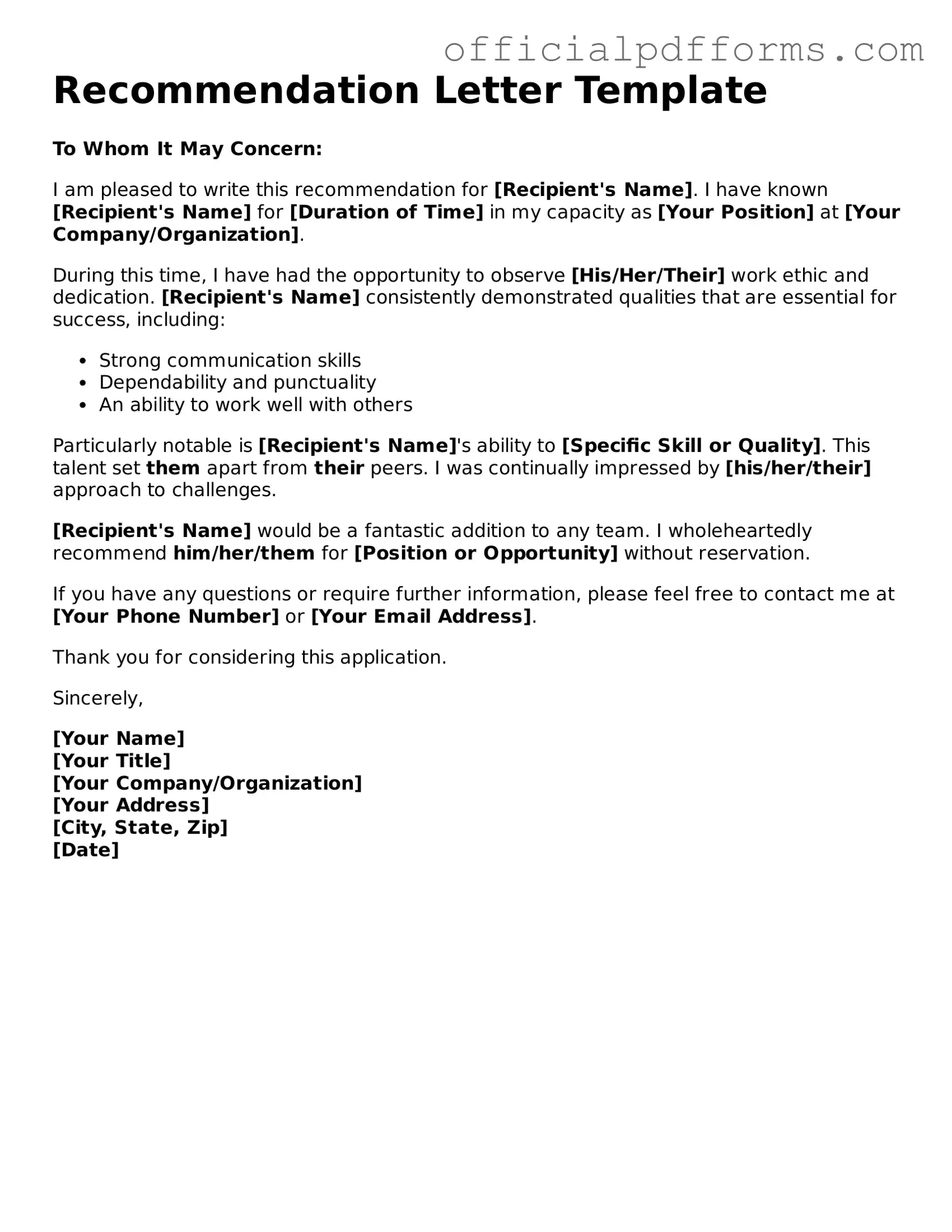A Recommendation Letter form is a document that allows individuals to request a letter of recommendation from someone who can speak to their skills, character, and accomplishments. This form helps streamline the process for both the requester and the recommender.
Who should I ask to write my recommendation letter?
Choose someone who knows you well and can provide specific examples of your strengths. Ideal candidates include:
-
Teachers or professors
-
Employers or supervisors
-
Coaches or mentors
-
Community leaders or volunteer coordinators
Typically, you will need to include your name, contact information, the name of the person you are asking for the recommendation, and details about the opportunity for which you need the letter. Be clear about deadlines and any specific points you want the letter to address.
Submission methods may vary. Common options include:
-
Handing the form directly to the recommender.
-
Sending it via email if the recommender prefers digital communication.
-
Using an online platform if the institution or organization has a specific submission process.
Encourage your recommender to reach out to you with any questions. Be prepared to provide additional information about the opportunity or clarify any points on the form. Open communication can help ensure they write a strong letter.
Can I see the recommendation letter before it is submitted?
It is courteous to ask your recommender if they are comfortable sharing the letter with you. Some may prefer to keep it confidential. Respect their choice, as many recommenders feel that confidentiality allows them to write more candidly.
What should I do if my recommender misses the deadline?
If the deadline passes, contact your recommender politely to remind them. Express understanding of their busy schedule. If necessary, consider asking someone else for a recommendation to meet your deadline.
How long should the recommendation letter be?
A recommendation letter typically ranges from one to two pages. It should be long enough to provide a thorough assessment of your abilities but concise enough to maintain the reader's interest.
While there is no strict format, a recommendation letter should generally include the following components:
-
A formal greeting
-
An introduction of the recommender
-
A discussion of your qualifications and experiences
-
A conclusion summarizing the recommendation
-
A formal closing
